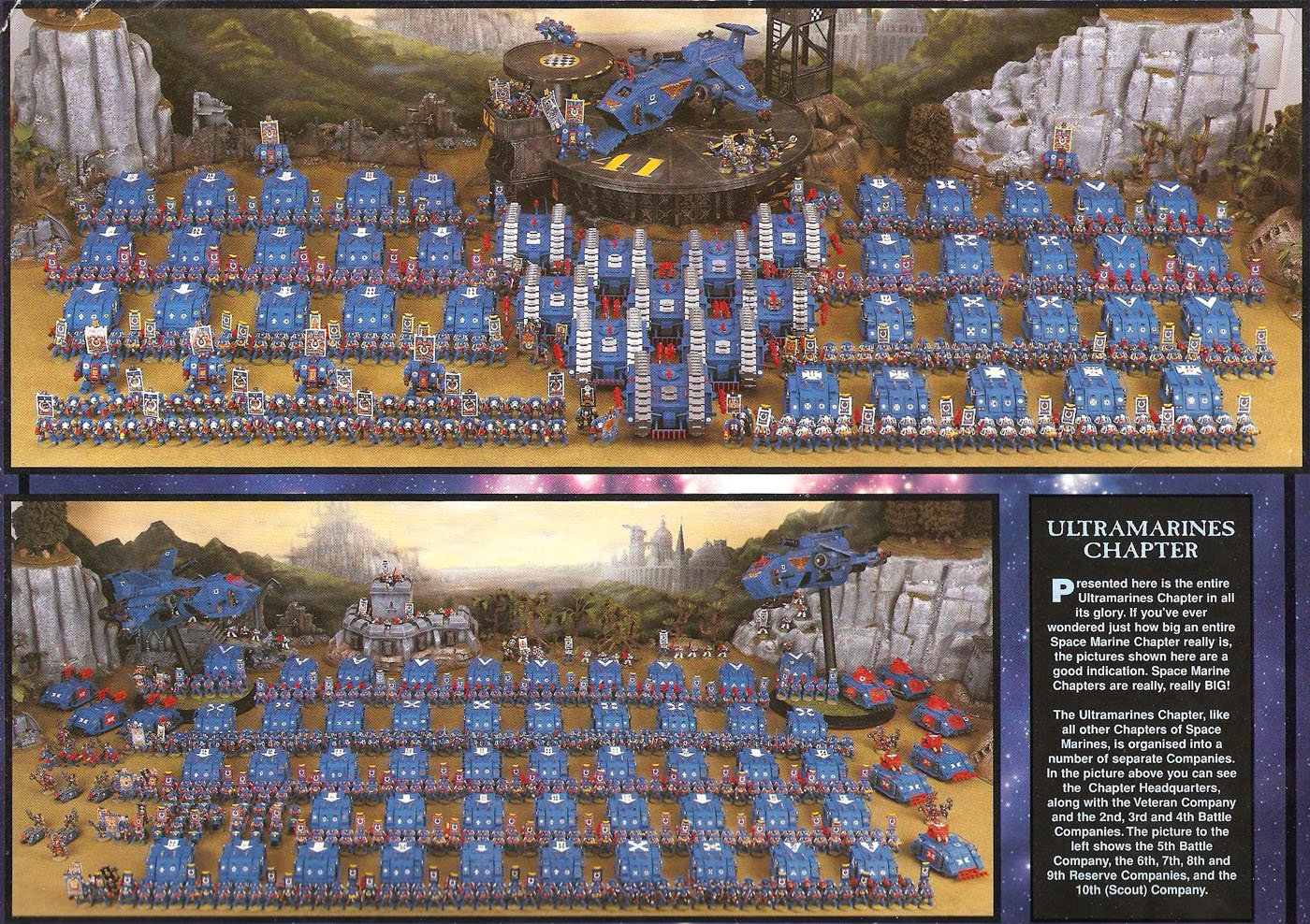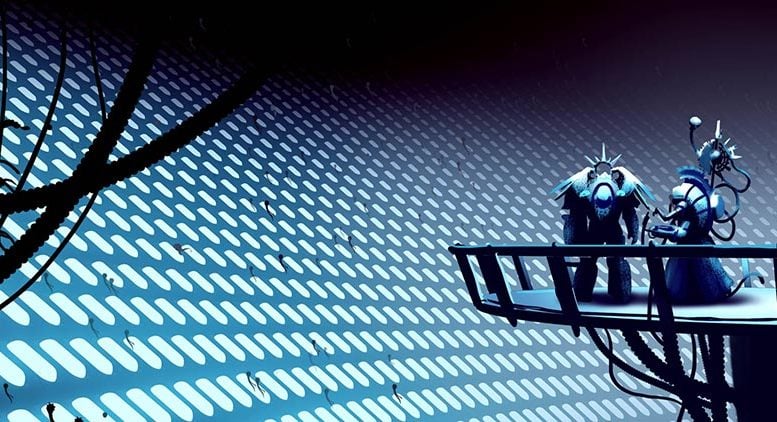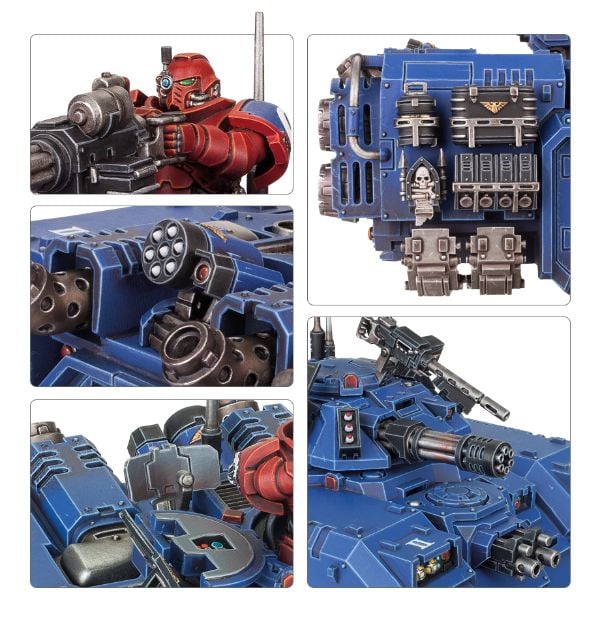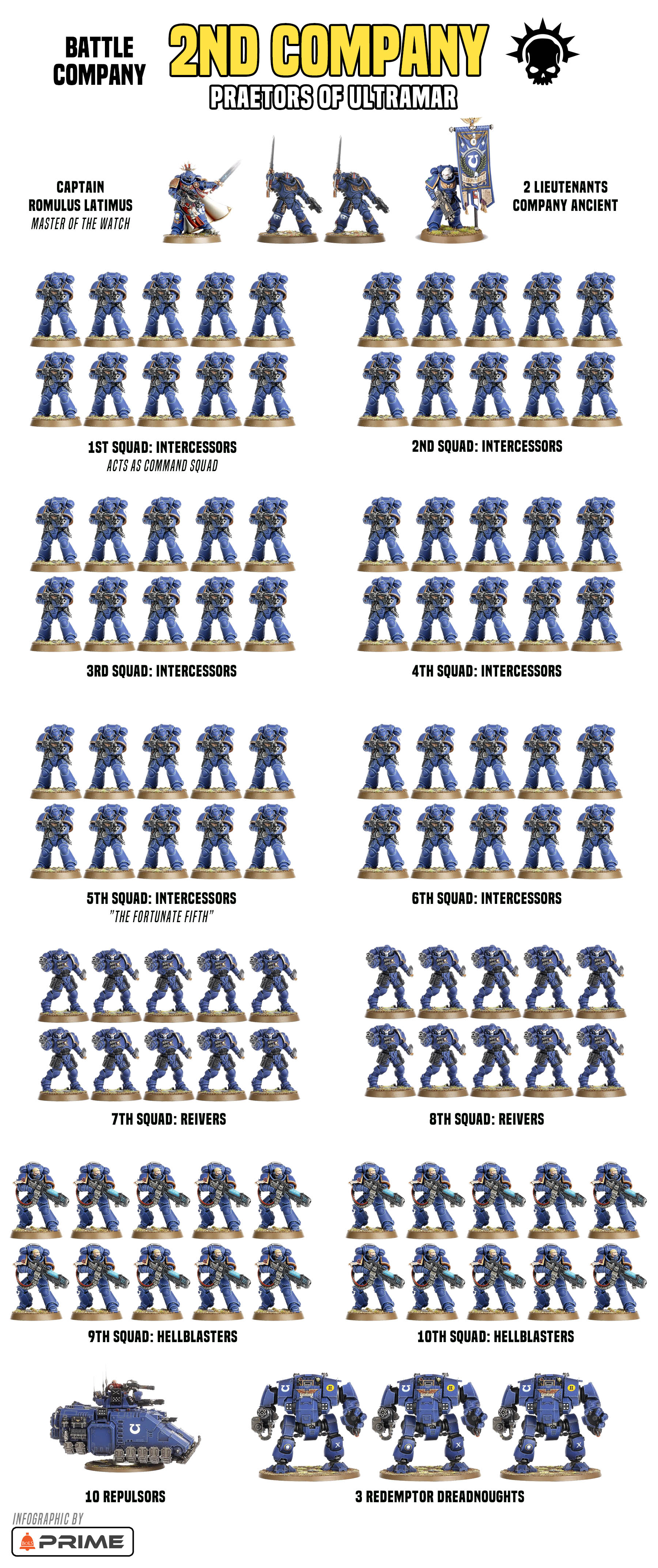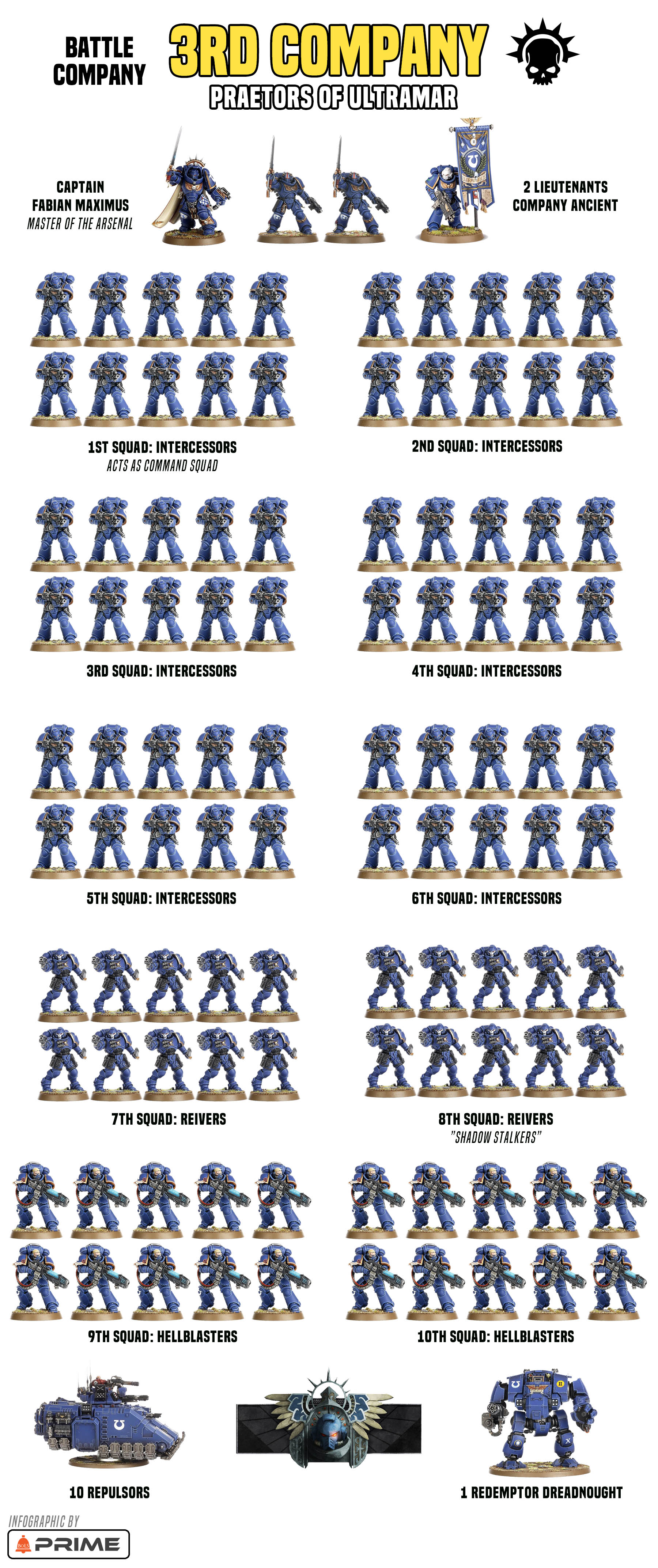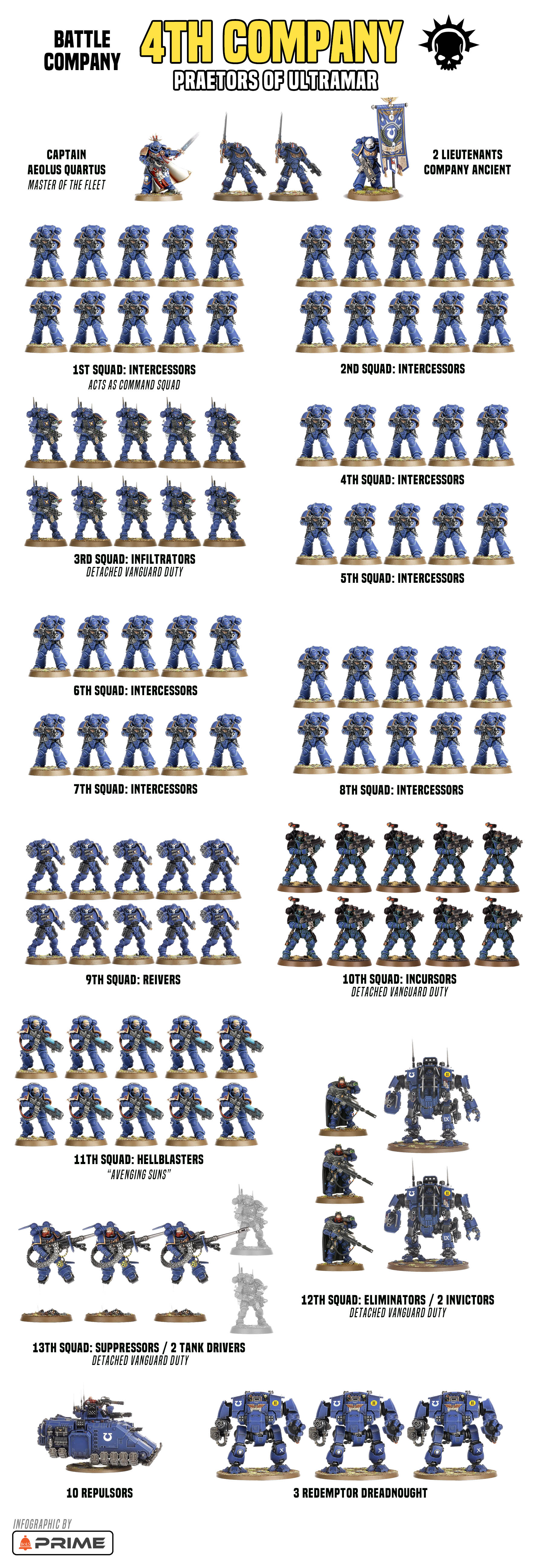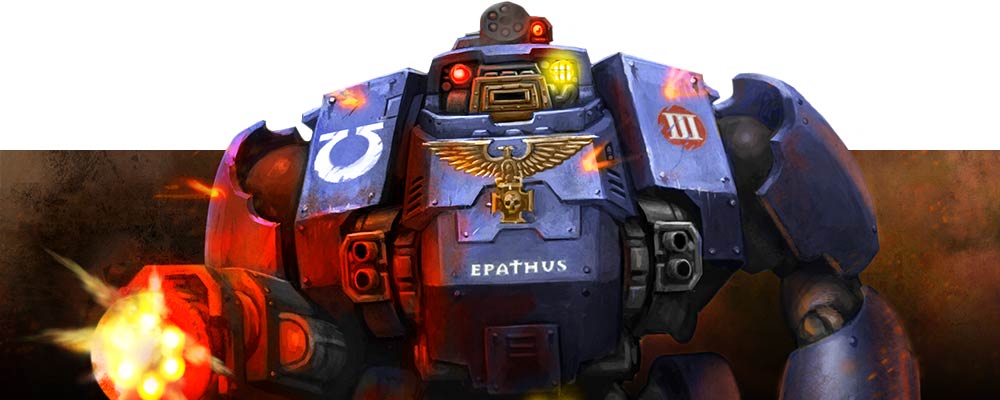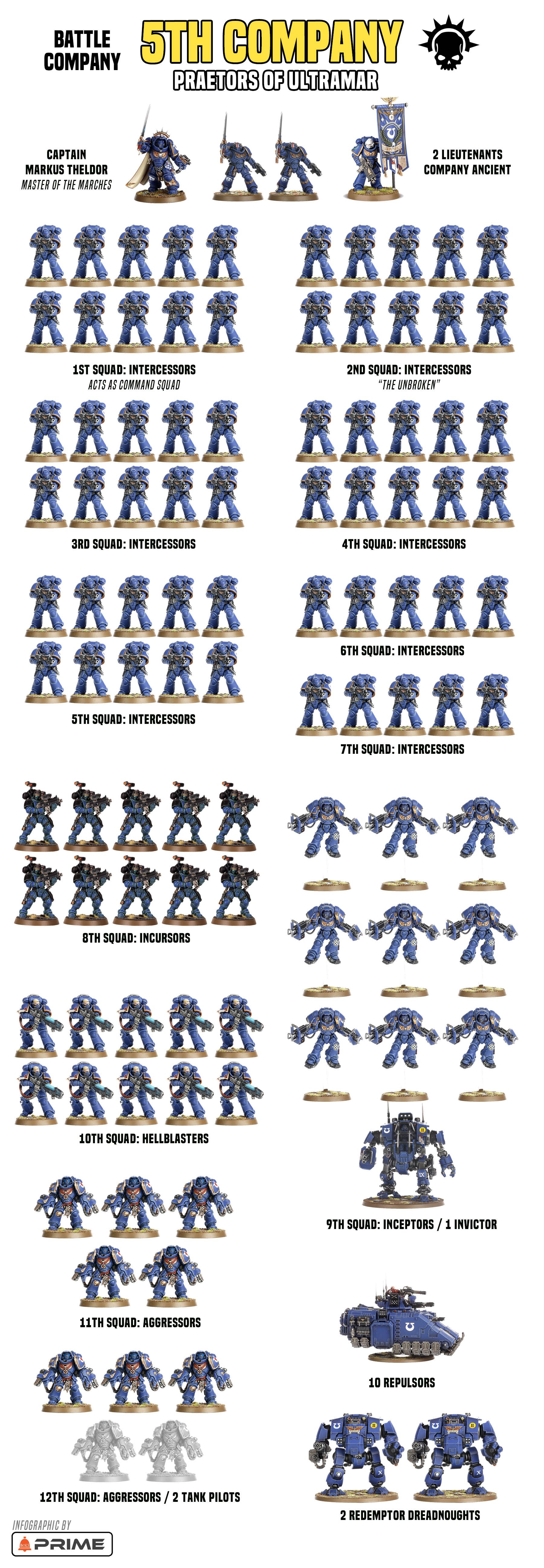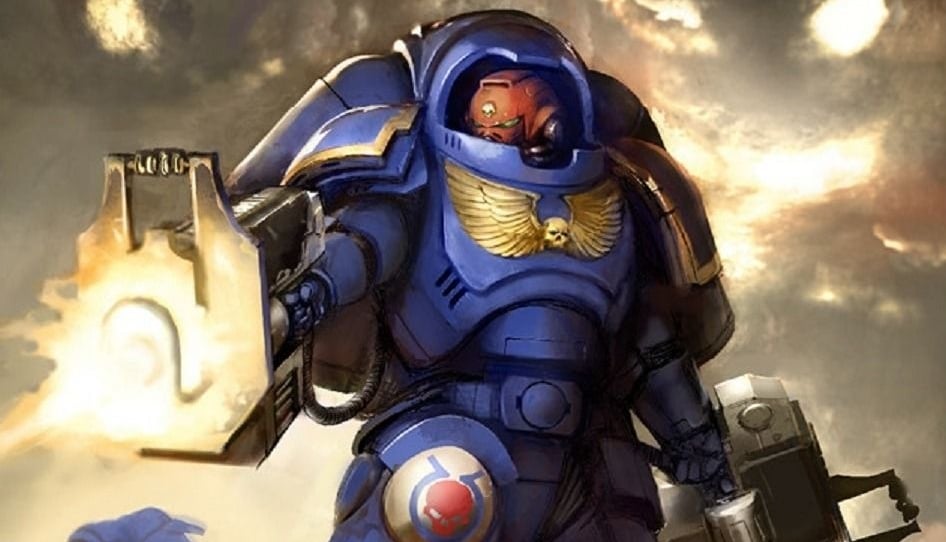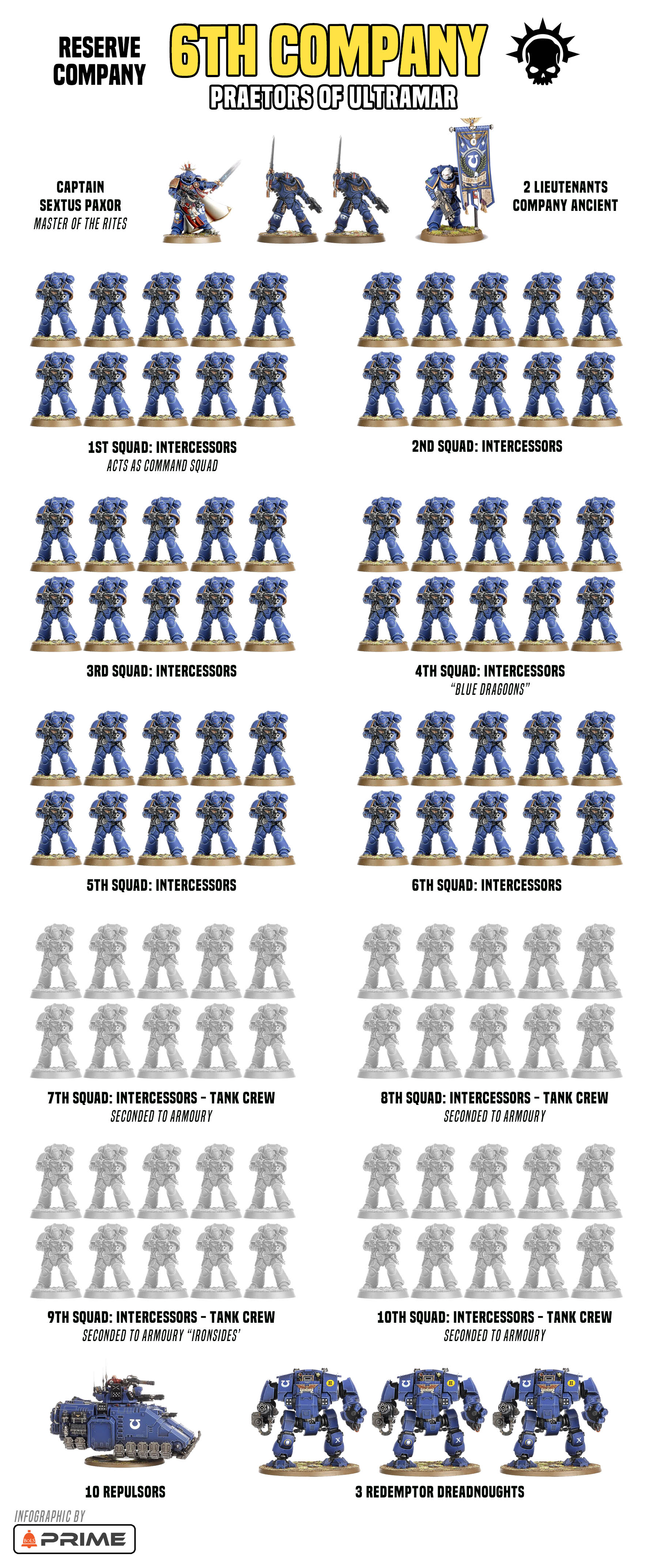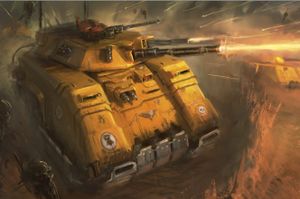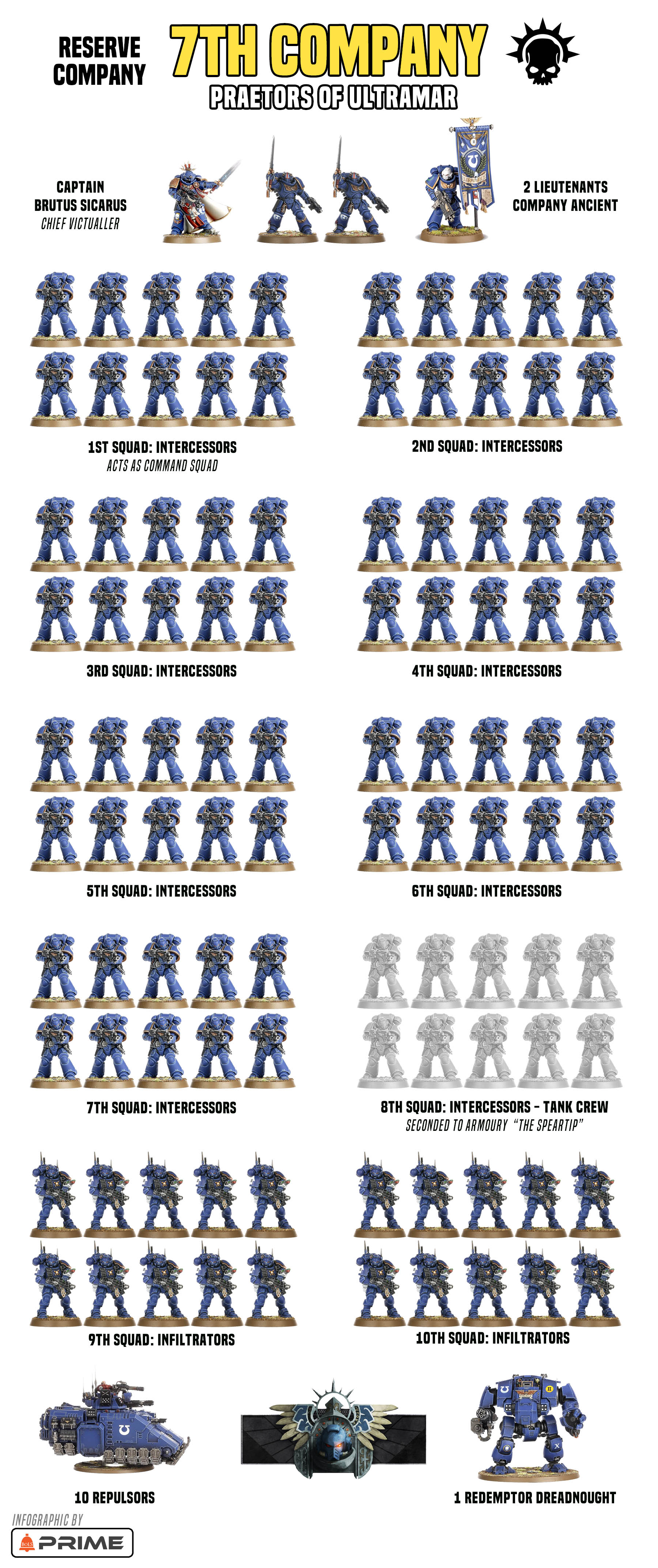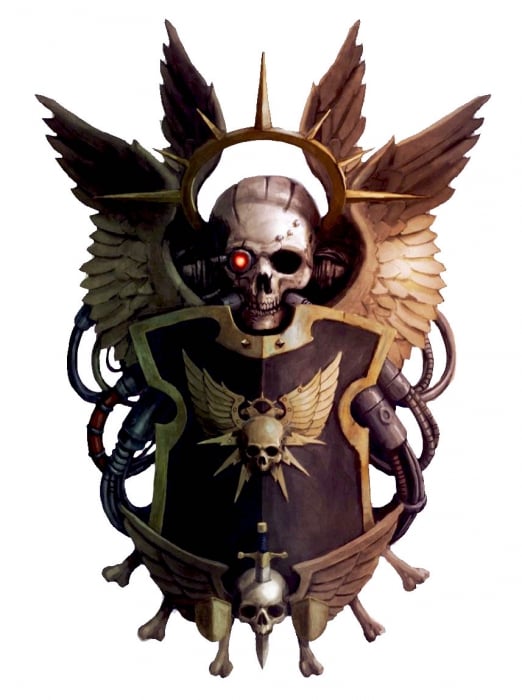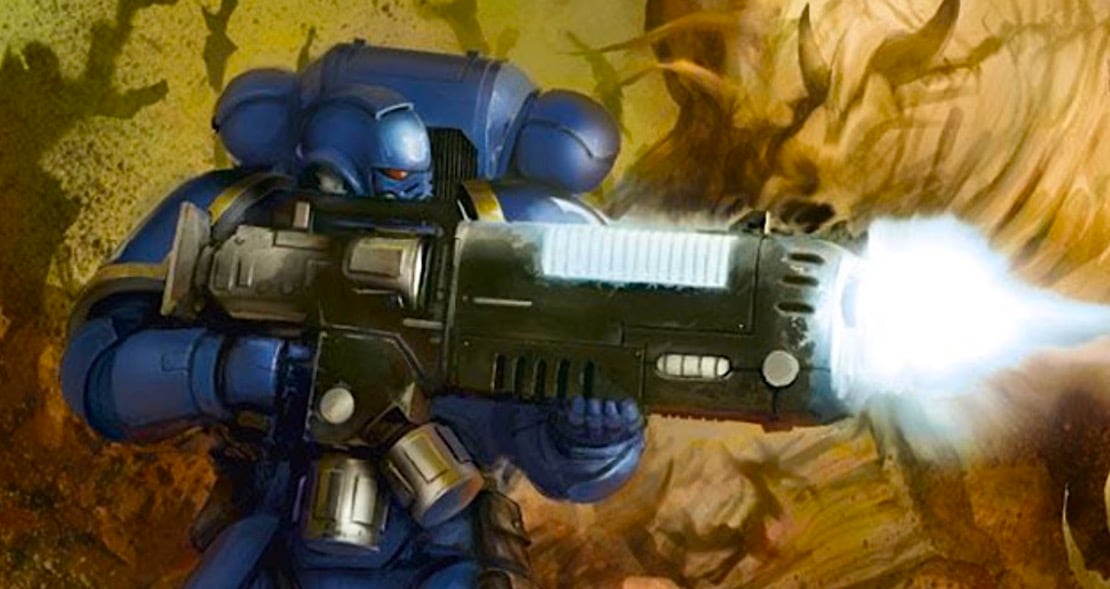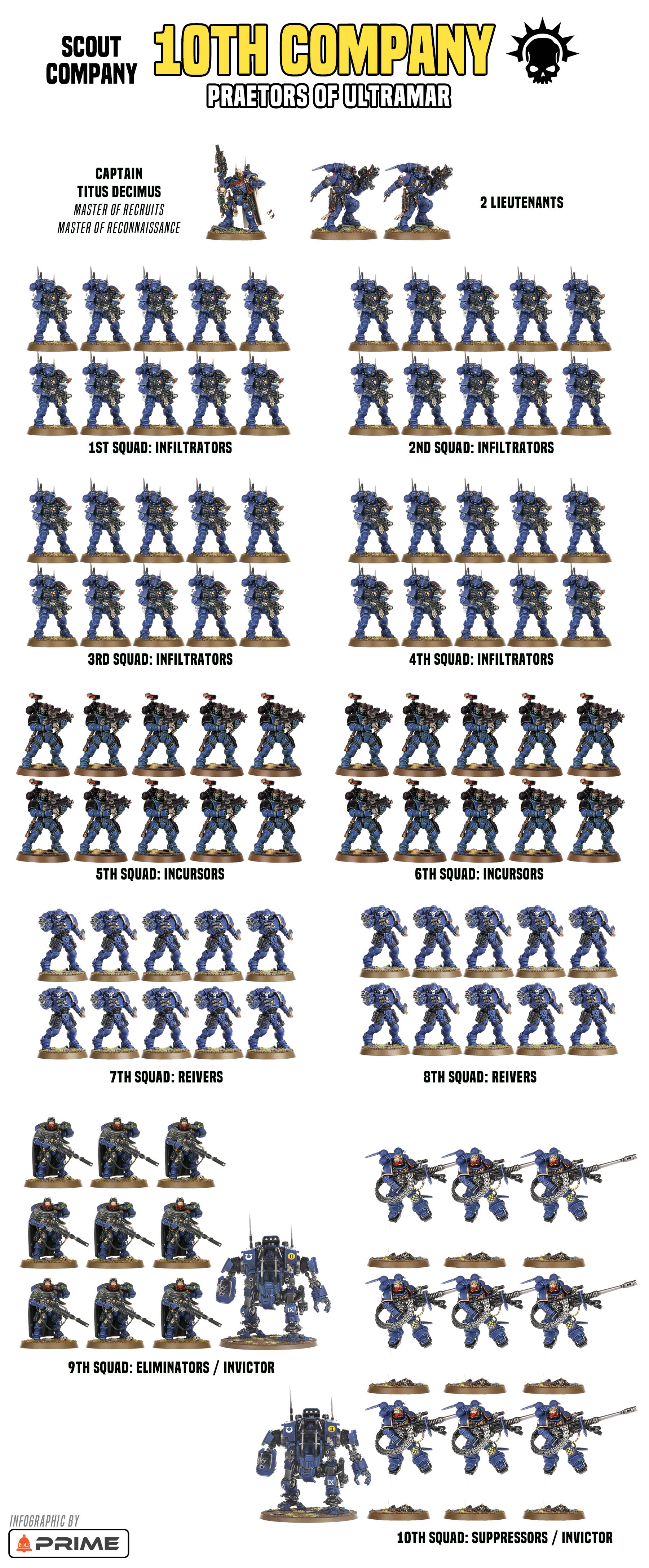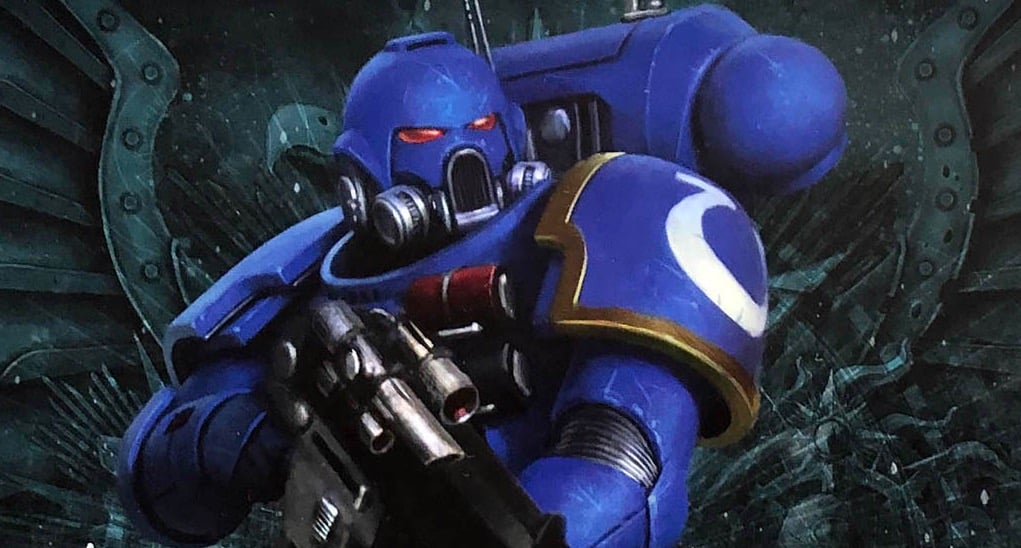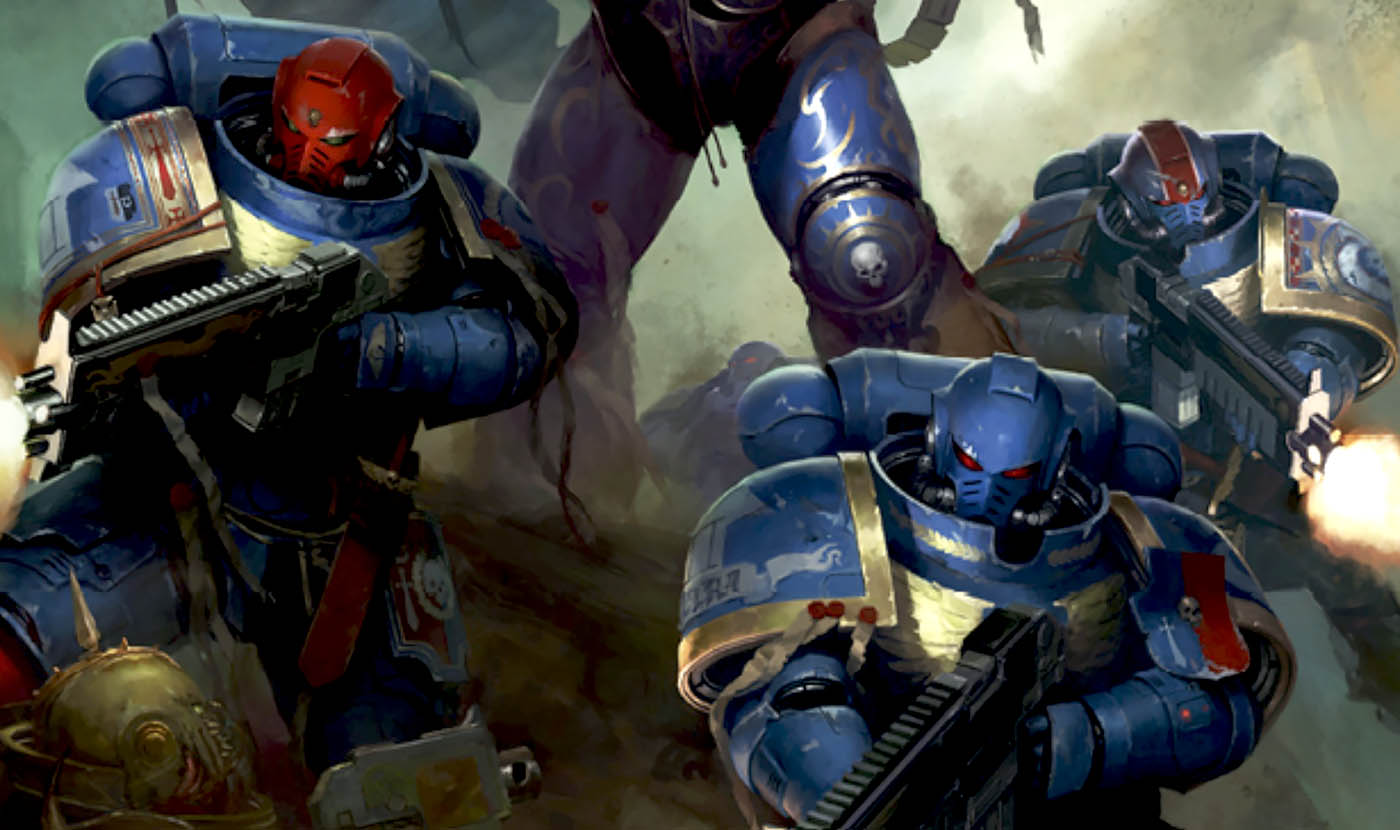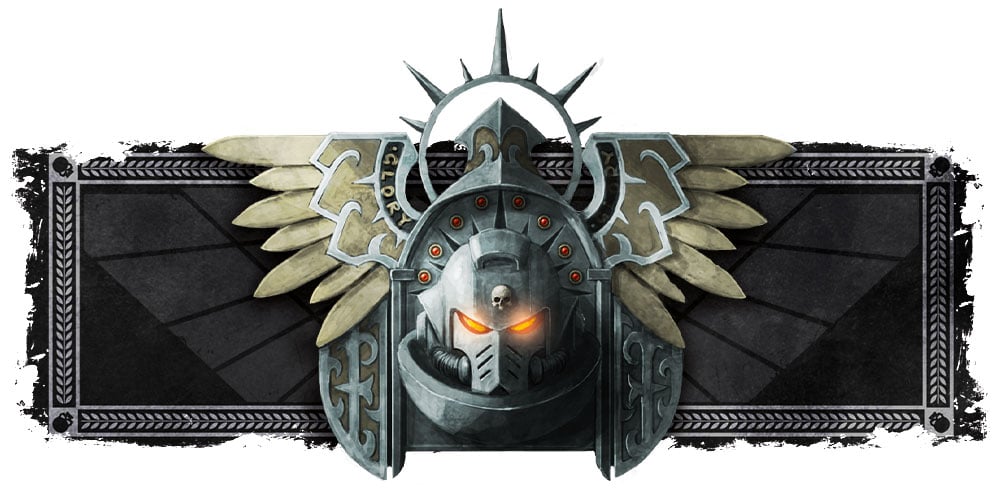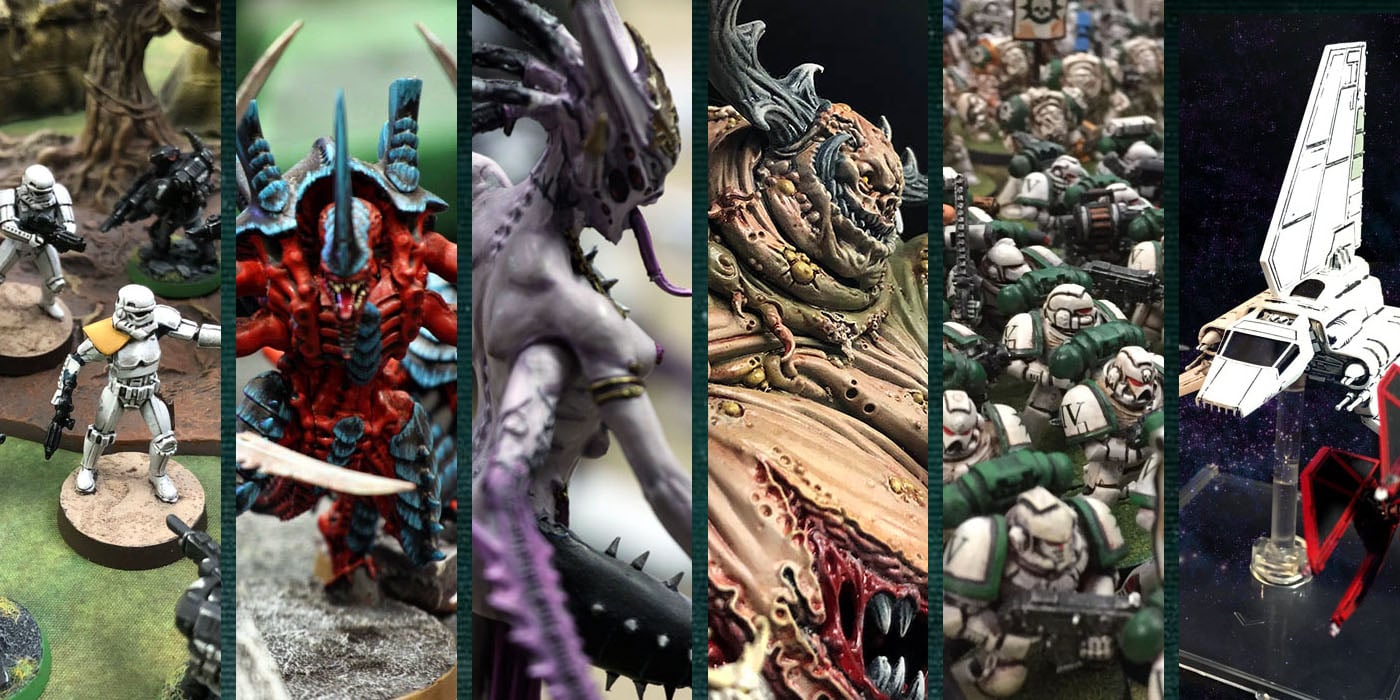Warhammer 40K: Organization of a Primaris Chapter – Prime Bonus
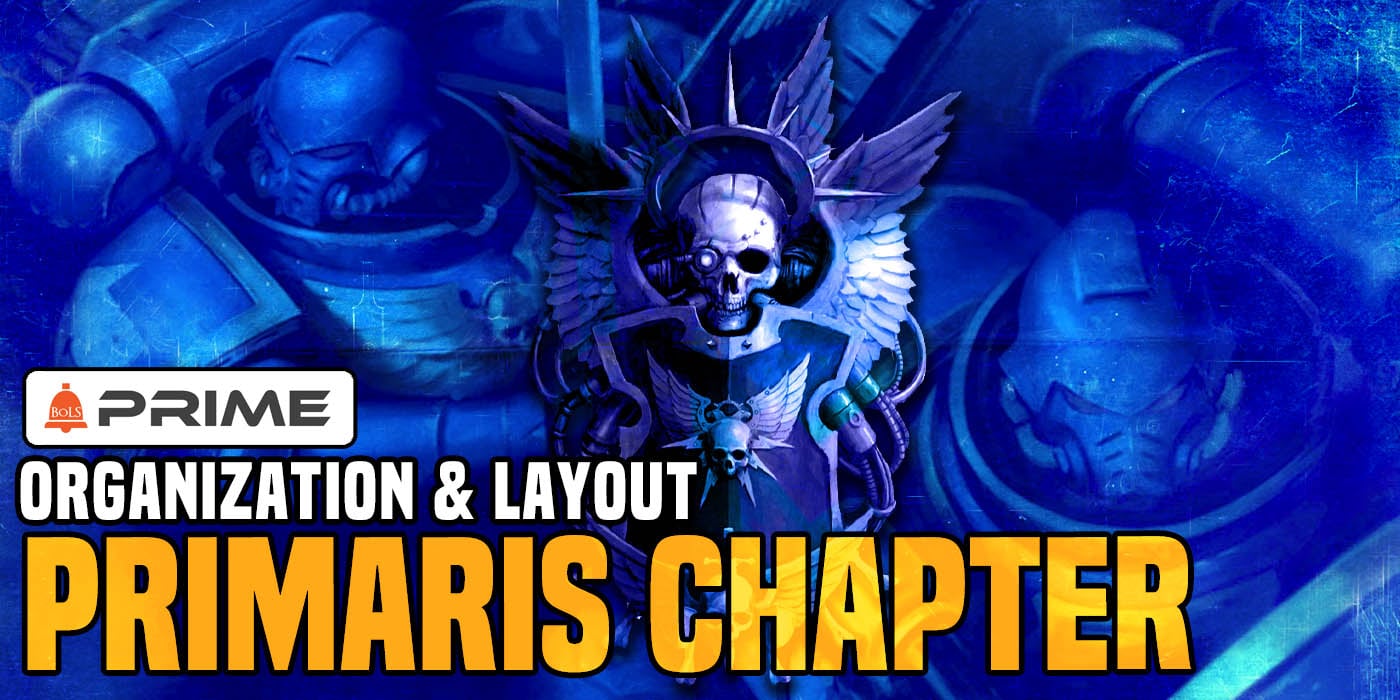

BoLS Prime kicks off with a deep dive into exactly what a full Primaris chapter really looks like and how different of an animal it is from previous traditional Space Marine chapters.
The organization of the Space Marine Chapter, as laid out by the Codex Astartes, is an integral part of the lore of Warhammer 40,000. It forms the base of the most powerful and iconic defenders of humanity and has shaped the Long War that’s been fought since the arch-traitor Horus’ forces were driven back from the Throneworld. Something so central to the most popular 40K faction has, of course, been described in plenty of detail over the years. We’ve gotten detailed layouts of the standard Chapter Organization in several books, layouts of specific Chapters and descriptions of Companies down to the man. In a few notable examples, we’ve even seen entire Chapters deployed on the tabletop.
All of these combines to give us a solid look at how a classic Chapter is organized. Though some questions and vagueness remain, in particular relating to the crewing of vehicles and the deployment of newer units and technology, we could up until the end of 7th Edition be fairly confident that we knew what a Chapter looked like. That, however, was before the start of the Era Indominus and the Ultima Founding introduced the Primaris Marines. The introduction of Primaris Marines into the existing Chapters gave rise to several new questions. These pertained to how these new units, with new roles and sizes, fit into the current, rather strict structure of a Space Marine Chapter. The two 8th Edition Books, Codex Adeptus Astartes: Space Marine (2017) and Codex: Space Marines (2019), delved into that a lot and have mostly laid to rest these questions.
“The Ultima Founding created roughly one thousand new Primaris only Space Marine Chapters.”
While the organization of a mixed Chapter has now been well explored one great mystery remains. The Ultima Founding created roughly one thousand new Primaris only Space Marine Chapters. This represents a considerable part of the overall Adeptus Astartes and accounts for roughly half of the existing Chapters. Though these Chapters are common, and often on the front line of war, their organization has not been detailed. While they adhere to the newly modified Codex Astartes, often more rigorously than older Chapters, they are missing several of the critical elements that make up the core of classic Space Marine Chapters. This has left a large number of questions as to what their order of battle might look like.
To help rectify this, let’s take a look at what the hypothetical organization of an all Primaris Chapter might be. This organization has been extrapolated from information from the Codices as well as some of the novels dealing with Primaris Marines. It is based on the information available as of the writing of this article and as such cannot take into account new information or units introduced at a later date. The following organizational charts are only hypothetical. However, I hope that they may prove useful in answering some of the questions surrounding chapter origination and that hobbyists, lore enthusiasts, and players may find them useful in their own work.
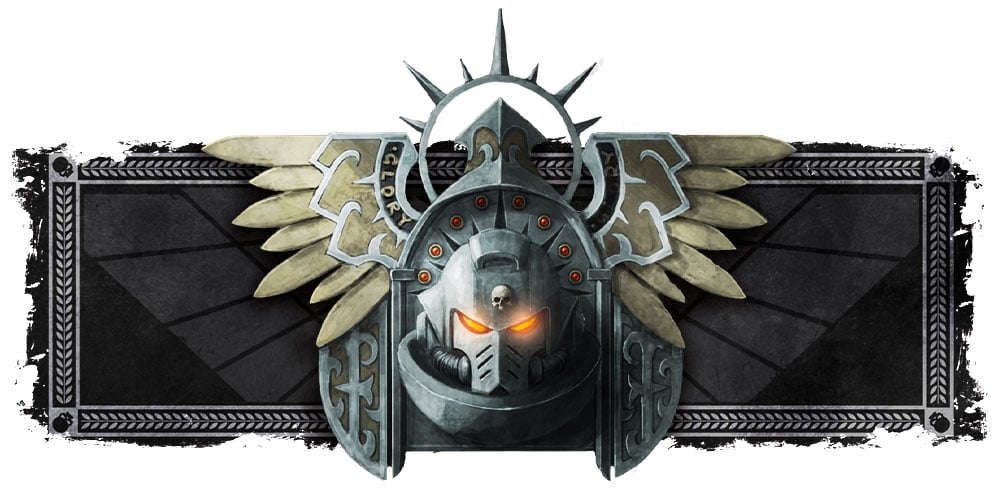 Our Chapter
Our Chapter
For this exercise, I will be detailing the hypothetical organization of a specific chapter. The Chapter we will look at is the Praetors of Ultramar. This is an all Primaris Chapter created by Guilliman at the end of the Indomtus Crusade. They are based at Howsbridge in Greater Ultramar and tasked with being an integral part of the defense of that realm. They are an Ultramarines successor chapter and arrived in Ultramar with Guilliman to fight in the Plague Wars¹. We shall look at them as they would have been on their arrival in Ultramar, freshly formed and at full and optimal strength. Since members of the Chapter fought in the Indomitus Crusade, the Chapter does include its share of veterans and makes use of all units types detailed in Codex: Space Marines (2019). While they have no officially listed color scheme, I assume that being an Ultramarine successor and acting in defense of Ultramar, their colors are mostly identical to those of the Ultramarines; with differences, such as silvered backpacks noticeable only to the keen-eyed. Likewise, many of the Chapter’s symbols appear similar to those of the Ultramarines.
Chapter Command
Overall the Chapter Command remains mostly similar to that of the chapters we are familiar with, with only a few changes. Since most of the Chapter officers have a direct Primaris version, it is easy to convert over. For his personal guard, the Chapter Master uses two Squads of Veteran Intercessors, since Primaris Marines lack any direct replacement for traditional Honor Guard. The Ultramarines do have a Primaris Victrix Honor Guard, but that is Ultramarines only and are specifically not used by successor chapters. Of course, due to the flexibility of Mk. X armor these Veterans could choose to equip themselves differently as needed.
Both the Reclusiam and Librarius can be found in any other chapter, though as the Praetors are a new chapter and have not started recruiting, they have no Acolytum in their Libarius. The Apothecarion has swelled with the introduction of two new groups. The Helix Adepts are permanently assigned to Battleline Squads, yet do some training in the Apothecarion. More radical is the inclusion of the Biologus Genetor Acolytes. These members of the Adeptus Mechanicus are the only ones who know the secrets behind the creation of new Primaris Marines and are vital to the continuation of the Chapter despite not being fully part of it.²
The most radical changes and questions can be found in the armory. Usually, the armory is manned by a number of Techmarines who both care for the upkeep of the chapter’s vehicles and weapons, as well as serving as crew for vehicles alongside crew members drawn from the various companies. The issue here is that there doesn’t seem to be any Primaris Techmarines around. Their absence, both rules, and model wise, from both the current and prior Codices is something many people have noted. In addition, I am not aware of any Primaris Techmarines mentioned in the lore, though that could change.
However, there are some hints. Many of the new Primaris tanks are crewed by Marines in Techmarine Red and with Cogwheel shoulder pads, though it’s not clear if these are full Techmarines or just crew from the companies in different armor as befits their role. We’ve also seen pictures of an Iron Hands character that appears to be a Primaris Techmarine or Forgefather; this, however, seems to be a named character and not a generic one. With all that said, I’ve posited that it’s possible the lack of Primaris Techmarines is made up for by Martian Tech-priests on loan from the Adeptus Mechanicus. Indeed it’s possible such was made necessary by all the new, and more complex, technology used by Primaris units. Perhaps it’s also that Cawl and the Mechanicus don’t want all their new secrets getting out.
Given that the Chapter has already accepted members of the Adeptus Mechanicus into the Apothecarion, this isn’t as unbelievable as it might once have been. Alternatively, the armory could just be staffed by normal Techmarines that we haven’t seen yet. It’s also possible that Techmarines take longer to train than other specialists, often visiting Mars for an extended period. Perhaps the required Techmarines for the new chapters are still in training, and Mechanicus Adepts are filling in as a stop-gap to be later replaced by full Techmarines.
Equipment-wise, the armory is rather simple compared to a classic chapter. Primaris Chapters only have access to three types of tanks, and one super heavy, as opposed to the dozen-plus that old-style Marines used. Also, the lack of bikes and speeders is an additional burden off of the armory. I’ve posited that the heavy Repulsor Executioner and the specialist Impulsor are regular parts of the armory; however, only a limited number of stock Repulsors are because the majority are directly part of the Company organization. I’ve put some generic Gunships in the armory as well, as I assume Primaris Chapters have some sort of air support, but this is an unknown. In addition to the tanks, the armory would be in charge of the Invictor Warsuits and the various types of heavy Gravis armor.
The final part of Chapter Command is the fleet. I suspect that the Chapters of the Ultima Founding have smaller fleet elements than many of the older, more established chapters. This would be simply due to a lack of ships, while Cawl may have had ten thousand years to stockpile Marines and weapons in Martian vaults, I rather doubt the Imperium had a few thousand Battle Barges and Strike Cruisers just sitting around. Thus, I’ve given our Chapter a fleet roughly half the size of one such as the Ultramarines muster and without any Battle Barges, and even this might be too large. Given that the Chapter is tasked with being part of the full-time defense of Ultramar, I would expect that it gets augmented by the other fleets active in the realm. Notable inclusions are the new Rudense class ships and the Overlord assault landers, which appear to have replaced Thunderhawks for Primaris units³.
1st Company
The 1st Company, as prescribed in the Codex Astartes, is the Veteran Company. In a classic Chapter, this company is made up of one hundred Veterans, who use specialist gear, only available to them for the mission. This includes Terminator armor, special issue bolt guns, and combi and close combat weapons not normally deployed in other squads. For Primaris only units these options are not available. Currently, the only Veteran units that we have rules for, or much textual support for, are Veteran Intercessors. The Ultramarines Codex Supplement does state that, at least among that Chapter, Veteran Intercessors from the First Company do use other types of armor, such as Phobos and Gravis as needed4. Given the modular nature of the armor, this makes sense. As a standard though, I would guess they are arranged in 10 squads of ten Intercessors.
To make up for the lack of Terminator armor, I postulate that the Veterans make extra use of the heavy Invictor Warsuits, deploying them in squad sized formation would have a similar effect as a large scale deployment of Terminators. These Invicitors might be deployed en masse or split up to provide support to other units. As this Company is the Veteran Company, it also has a larger than the typical number of Dreadnoughts. Lastly, I’ve attached ten stock Repulsors directly to the company. These take the place of the Rhinos that classic Company would employ, while also doubling as Droppods5. This allows the whole force to be mechanized. Even if the First is normally deployed as Intercessors, the mix of Dreadnought, Invictor, and Repulsor gives it a dizzying array of heavy weapons and close combat potential.
A note on Command Squads: Most Codex Companies are shown as having a command squad, often comprised of a Chaplain, Apothecary, Ancient, and a handful of other Veterans with special weapons. The command squad also sometimes contains a Company Champion and/or a Techmarine. For our purposes, some of these units are already accounted for in the chapter command, and I’ve chosen not to include them again here. For others, such as the Techmarine on foot and company champion and even Veterans with special equipment, there does not seem to be a direct Primaris equivalent. Also, in the novel Dark Imperium, Primaris Captain Felix of the Ultramarines does not seem to be accompanied by a dedicated command squad, though he is at times joined by Librianians and an Apothecary as needed6. This leads me to think that among the Primaris, there is not the same dedicated command squad for each Company you would find in a Classic Chapter. To rectify this I’ve included an Ancient in each Company, as we know these exist. I further posit that other specialists are attached from Chapter command on an ad-hoc basis, while the first squad in each Company acts as a de-facto command squad, following the Captain into battle.
This change has the bonus that the Companies adhere more closely to the Codex than before, with them including 100 Marines, three officers, and any Dreadnoughts; as opposed to the 104 Marines, three officers, and dreadnoughts we might see with a dedicated command squad. Overall, I think this is an elegant solution that works well with what we know. It’s, of course, possible that Primaris only Chapters do have company command squads made up of Veterans, but I’ve been able to find no textual evidence to support that.
2nd Company
Here we have the first of the Battle Companies. Traditionally the 2nd -5th Companies form the main battle line of the Chapter. In a classic old-style chapter a Battle Company consisted of six ten-man squads of Tactical Marines, two ten-man squads of Assault Marines, and two ten-man squads of Devastators. Recent changes to the Codex have updated this to be six Battleline squads, two Close Support Squads, and 2 Fire Support Squads to make up for the increased variation in squad types.
I’ve set up the 2nd Company here to show what we might think of as an archetypal all Primaris Battle Company with the closest direct replacements to Tactical, Assault and Devastator squads in the Primaris arsenal. Thus, we have six ten-man Intercessor Squads, two ten-man Reiver Squads, and two ten-man Hellblaster Squads. The 2nd is supported by a handful of Dreadnoughts, and again has the ten integrated Repulsors for transport. As the cutting edge of the Chapter, the 2nd is designed to be able to deploy a mass of Marine infantry, with close IFV support, to the battlefield. For heavier support, they would likely use attached Aggressors and Inceptors from the 8th and 9th Reserve Companies.
3rd Company
The second of the Battle Companies the 3rd is set up identically to the 2nd. It should be remembered that due to the modular nature of MK. X armor the “basic” troops of the company can take on other roles as needed. I’ve chosen to show them here in their default equipment. Between the 2nd and 3rd, the Chapter can deploy a mass of supported infantry units as needed.
4th Company
With the 4th Company, we begin to see some of the variations possible within even the Battle Companies, as well as some of the flexibility of Primaris Chapters. One update Guilliman has made to the Codex is to allow companies, previously limited to ten ten-man squads, to include up to twenty squads, allowing some of the ten-man squads to be broken into five-man units, though the company as a whole may still only have 100 Marines7. Thus the 4th Company is broken up into thirteen Squads, with seven ten-man squads and six five-man squads to allow for extra flexibility. The 4th Company’s three Dreadnoughts are well known from being a close-knit group before their wounding and subsequent entombment; now these three friends have a plethora of weapons with which to punish the heretic and xenos alike.
In addition to the modified number of the squads, the 4th Company has also deployed a number of its units on a detached Vanguard mission. Thus the 3rd Squad has donned Phobos armor and are acting as Infiltrators. Since both Infiltrators and Intercessors fill the Battleline combat role, the Codex is being followed here. Likewise, 10th Squad has taken on the alternate Close Support role of Incusrors. To support these squads, the 12th Squad has switched from the Standard Hellblaster role to another fire support role of Eliminators. Eliminators, however, are deployed in three-man teams; the Codex takes account of this, mentioning that when squads deploy in odd numbers, three or six, the remaining members find use in other roles such as piloting Invictor Warsuits or driving tanks8. To this end, the two spare members of the 12th Squad have taken on the role of Invictor Pilots to support the Vanguard deployment. Lastly, 13th is deploying using Suppressor gear, with their spare members acting as tank drivers, likely for some Impulsors detached from the armory for the mission.
With this setup, we can see how flexible a Battle Company can be. By changing the squad makeup to battlefield roles, rather than prescribed squads types, Primaris Chapters can make use of their modular armor and adapt to many situations. They are also able to detach and deploy Vanguard Forces as needed without drawing on the 10th Company.
5th Company
The 5th Company represents the last of the Battle Companies and shows us yet another potential arrangement of squads. Not only is the Company broken up into twelve squads, mixing five and ten-man squads, but they are equipped in many different roles. The core Battleline Squads, seven here but still representing the prescribed sixty Marines, are deployed as your basic Intercessors. The division of what would typically be a 6th squad into two five-man squads allows for increased tactical flexibly.
Both of the Close Support squads, which we might expect to find as Reivers, have taken on alternate roles. The 8th Squad has deployed as Incursors, though they are not on a detached Vanguard mission and instead serve as skirmishers for the rest of the company. The 9th squad, meanwhile, has split up into several smaller units. The nominally ten-man squad has deployed as three three-man teams of Inceptors. While I haven’t found any direct textual evidence for this kind of deployment, it would help explain the prevalence of three and six-man Inceptor Squads. While it’s possible that all Inceptor Squads are formed from either a five-man squad with the two spares filling other roles or in the case of a six-man Inceptor force a ten-man squad with the four spares getting reassigned; this ends up being very wasteful. In a situation where you don’t have a particular need for the extra men as pilots, you would be left no way to efficiently deploy larger numbers of Inceptors (or any other three-man squads).
To address this, I posit that as needed it is permissible to break down a ten-man squad into three temporary three-man squads, to more efficiently make use of their numbers. In this situation, only one of the three-man squads would have a “real” sergeant with the others being acting sergeants for the duration of the split. With this setup, you would only have a single leftover Marine, who can be given another role – in this case as an Invictor pilot.
The 5th’s two Fire Support Squads are spit into three squads; again consisting of the required twenty Marines. They, too, are deployed in a variety of roles. The 10th Squad has deployed as your standard Hellblasters, providing the Company with a large block of mid-ranged heavy firepower. The 11th Squad has deployed as a five-man Aggressor unit. With several squads having a prescribed size of three to six, it’s not entirely clear if they are only deployed as three or six-man squads, or if they can deploy in other sizes. It’s possible the Codex would require this squad to deploy as a three-man squad with other members being used as pilots, as is the case with 12th Squad. However, I feel a five-man squad makes sense because it’s the maximum load a Repulsor can carry, and it is a unit size that can be taken in game. It’s possible new evidence will come up forcing a revision of this squad, but for now, I’ve gone with this setup.
6th Company
Under the Codex 6th and 7th Company are classified as Reserve Companies, each made up of ten Battleline Squads (or under the new organization one hundred Marines arranged into ten-twenty Battleline squads). While able to deploy on their own, the Reserve Companies are customarily used to reinforce the Battle Companies, filling gaps or bulking out a force. 6th Company, in particular, is commonly the location where tank drivers are pulled from en masse. It’s not unheard of for a 6th Company to be deployed entirely as tank crew to allow the Chapter to deploy an armored spearhead9.
Here the Company is organized into ten ten-man Intercessor Squads, as basic as it gets, with a full four squads, forty Marines, deployed as a tank crew. Given the needs of the Chapter, it seems likely that this number is actually too low, and that in many cases the 6th, and likely 7th, Company is almost fully cannibalized to meet the crew’s needs. Our Chapter, as described, has around one hundred and forty armored vehicles (not counting warsuits or Overlords). This is less than the around two hundred vehicles the Ultramarines10 make use of, or the close to two hundred and fifty the Blood Angels have11. Both those chapters are of course First Founding and use a wider array of chassis making it logical they would have greater numbers of armor.
Given roughly one hundred and forty vehicles, many of which require two or more Marines to crew them. Even crewing a quarter of them, providing, say, four companies with Repulsors, would need around one hundred crew, or a company’s worth of Marines. It’s possible some of the crew come from the armory, but as I posit that there are no Techmarines in the armory the burden of tank crews would fall entirely on the troops seconded from the Companies. Even if there is a full complement of Techmarines, that would only account for at most forty crew members. All this goes to say that it’s likely a significant part of the Chapter, and the 6th and 7th Reserve Companies, in particular, is tied up in manning tanks.
7th Company
Like the 6th Company, the 7th is a reserve Battleline Company. In a traditional chapter, the 7th Company is normally either deployed as a mass infantry force or is used to crew light skimmers, such as Land Speeders, or as pilots for aircraft12. Primaris Chapters, however, lack most of the light skimmers that are present in older chapters. They contain no Land Speeders, nor any of the Land Speeder variations. While they must contain some kind of aircraft, aside from the large Overlords, it’s not clear what type they use. Thus it is likely that the 7th simply helps out with crewing other vehicles as well as crewing the more limited flyers.
To represent this, eight of the 7th’s squads are arranged as ten-man Intercessor Squads, with one of them currently being deployed as tankers. To illustrate the flexibility of even a simple Battleline Reserve Company, two of the squads are deployed as Infiltrators, likely in direct support of a large scale deployment of the 7th. It’s important to note that in a classic Marine chapter, the 7th would only be filled with Tactical Marines and not able to have squads capable of the specialized Infiltrator role.
8th Company
While a Reserve Company, the 8th (unlike the 6th and 7th) is made up of Close Support Squads. For Primaris Marines, this means Reiver, Inceptor, and Incursor squads, and the company has been set up to represent this. The arrangement presented may seem strange at first, but in fact, serves a specific purpose.
Squads 1-19, along with the Lieutenant, represent a demi-Company of the 8th deployed in a Rudense-class rapid insertion vessel. As described in Dark Imperium a Rudense-class has three drop bays, each holding six three-man units of Inceptor, with a Lieutenant in one13. Supposedly the Rudense-class carries a fixed complement of fifty Space Marines, however simple math shows the bays hold fifty-five Inceptors, I assume the discrepancy is a simple rounding error. Now, the formation of Eighteen three-man squads doesn’t fit in with the known Codex yet; since it is directly mentioned in the text, I tried to find a way to support it. What we see here is that six of the 8th’s ten-man squads (nominally Squads 1st-6th) have been broken up into the eighteen temporary squads displayed. This would mean that twelve of the sergeants are in fact just acting sergeants and would return to their roles as regular battle-brothers once the deployment is finished.
The squad shown as the 19th Squad here would actually be the leftovers from the squads deployed on the Rudense-class. With no room on the ship for them, they’ve been split off to act as Invictor pilots, though shown as a squad here, it is unlikely they would be deployed together. Nor is it likely they actually come from the same squad, as the most likely situation would be each of the ten-man squads breaking into three three-man squads, with the leftover tenth man going off to pilot an Invictor (you can see a similar set up in the 5th Company’s 9th Squad). In addition, while there is no current model or rules for a Lieutenant in Inceptor armor it is directly mentioned in the text, so I’ve included it here.
They are exactly arranged and it’s clear that an Inceptor demi-company deployed in a Rudense-class is an incredibly potent force. The rapid deployment of fifty-five Inceptors would be enough to win many wars on its own. Combined with other forces, they can take and hold a landing zone and then be quickly reinforced by troops deploying via-Repulsor drop (Dark Imperium, pages 107-131). When not deployed as a demi-company, these squads would reconstitute their original formations and could serve in a Close Support role.
“The rapid deployment of fifty-five Inceptors
would be enough to win many wars on its own.”
The remaining four squads have been deployed in the other roles that the 8th fills. Squads 20, 21 and 22 (normally 7, 8 and 9) are acting in the Reiver role, while the final squad is performing the more specialized Incursor role. It’s likely these squads are deployed in support of another company or on solo missions. Since the 8th normally deploys either as scout/infiltration troops or Inceptors, the company does not have any native Repulsors as part of its organization, since these troop types normally deploy by other means. Should it need transport it can draw on the Repulsors or Impulsors of the Chapter Armory.
N.B. I should note that there is some confusion over the role of Aggressors, and what Company they belong in. In the Ultramarines book, they are listed as being part of the 8th Company14, and in the account of the life of Primaris battle-brother Gaius Pollandus it is likewise stated he served as an Aggressor while part of the 8th Company15. However, both the 2017 and 2019 Space Marine Codices clearly lists Aggressor as a Fire-Support Squad16 , which would solidly place them in the 9th Company. The White Scars Supplement also supports this placing of Aggressors in the 9th Company17. Thus either the mention of Aggressors in the 8th is an error, or it is something unique to the Ultramarine. For our chapter, I’ve chosen to go with a strict Codex interpretation and place them in the 9th, and not the 8th, Company.
9th Company
9th Company is the last of the reserve companies and is made up of Fire Support Squads. This is a diverse group. In a Primaris chapter, this can mean Hellblasters Aggressors, Suppressor, or Eliminators. Since many of these units are specialized and often deployed only in three-man squads, it leads to a rather complex company organization.
The 1st-4th Squads have all deployed as Hellblasters. This represents the most general formation and the large part of the Chapter’s infantry based heavy firepower. 5th Squad has been split up for deployment as Aggressors. Its ten members have deployed as one six-man squad of Aggressors, one three-man squad of Aggressors and the final member has deployed as an Invictor pilot. In this situation, the three-man squad would be led by an acting Sergeant, and the three parts of the original squad would not all be deployed together. It’s also possible that the squad could have been divided more simply into two five-man squads, similar to 5th Company’s 11th Squad, but I wanted to preserve the three or six-man sizes where possible.
The 6th Squad has also deployed as Aggressors. In this case, they’ve formed three three-man squads, two of which have acting sergeants, with the final member sent off to pilot something. The smaller squad sizes would allow them to be deployed on more separate missions.
7th, 8th, and 9th Squads are all acting in the Eliminator role at this time, though in different configurations. 7th Squad, a ten-man squad, has split into the now-familiar three three-man squads with one member going to the armory. 8th Squad, a five-man squad, has formed a single three-man Eliminator team, with two members off to the armory. Lastly, 9th Squad has formed one Eliminator team, with its two spare members piloting Warsuits.
The last three squads, 10th, 11th, and 12th, are equipped as Suppressors. These squads have been arranged similarly to the Eliminator squads, with a ten-man squad and two five-man squads broken up into as many three-man squads as possible with the leftovers going to act as pilots. I’ve debated whether five or ten-man squads as the bases for the three-man squads makes more sense. In the case of the five-man squads, it’s a pretty easy split, with two members being moved to a different role and no need for any acting sergeants or the creation of provisional squads. Splitting up a ten-man squad, on the other hand, allows for more of the members to fulfill the specialist role (nine of the ten-man squad can fill the role, versus only six out of two five-man squads). It does, however, call for an added layer of complexity. For our purposes, I’ve chosen to show both options, as neither seems more supported in the text, but its possible one is favored over the other.
“The 9th could deploy as one hundred Hellblasters”
It should be noted that as all these roles are Fire Support roles, any member of the 9th should be able to perform any role, not just the ones they are currently shown as holding. Thus, equipment allowing, the 9th could deploy as one hundred Hellblasters, Aggressor, Eliminators, or Suppressors. Given the specialized nature of some of these roles and the semi-rarity of Gravis armor, it does seem unlikely the Chapter has enough equipment to deploy the full company as any one unit besides Hellblasters.
10th Company
This brings us to the 10th and final company. In an older style chapter, the 10th Company is usually the Scout Company. However, in the new Primaris Chapters it’s more realistically the Vanguard Company, though it’s still called the Scout Company. In the past, the 10th was made up of a specified number of Scout Squads. These were filled with the newest recruits of the Chapter and severed as a training ground for them before they passed on to become full-fledged battle-brothers. After Guilliman returned he amended the Codex so that the 10th Company would include, along with the Scouts, a force of one hundred Vanguard Troops that are normally split into ten squads18.
There are some contradictory facts about where these Vanguard troops come from. The Vanguard Codex, a temporary book released as part of the Shadowspear Box set, introduced the concept of Vanguards states: “This standing force consists of hard-bitten veterans19.” The 2019 Space Marine Code, on the other hand, describes a Primaris Marine moving straight from neophyte to member of the 10th’s Vanguard Force20 and it is later stated that all newly created Primaris Marine first spends time learning the Vanguard roles in the 10th21.
I’m honestly not sure how to reconcile this discrepancy, and it’s not clear if the 10th Vanguard forces are new recruits or old veterans. My best guess would be that when newly formed the Vanguard forces were made up of veterans since the newly minted chapters had no recruits at the time. As time passed and the chapters started gaining recruits it’s possible that the 10th Vanguard slowly transformed from veterans to rookies. That is mostly what I’ve chosen to represent there, as a newly formed chapter our chapter currently has no recruits or neophytes, and thus there are none represented in the 10th. This will likely change soon.
As far as the actual organization of the company I’ve gone for a fairly straight forward mix of Vanguard units. Four squads of Infiltrators, two of Incursors and two of Reivers. 9th Squad has split into Eliminator teams, with one Invictor Pilot, 10th has done the same but as Suppressor teams. As an infiltration force, the 10th Company does not have any native transports, nor any Dreadnoughts. It can, of course, call on the Armory as needed for transports. It’s also important to remember that any of the Vanguard members can perform any of the Vanguard roles, allowing the company to, for instance, deploy a larger number of Invictors if needed.
What We Can Learn From This
So there you have it, a plausible complete organizational for an all Primaris Chapter. This represents my guess, based on as much textual evidence as I could gather, as to what a Primaris chapter looks like. As noted in various sections, some parts are conjecture and there are discrepancies in what the text tells us. Still, I think this is a very plausible snapshot of a Chapter. While hopefully useful for any hobbyists or lore enthusiasts, I also think we can learn a lot from looking at the setup.
While I’ll likely come back for some more in-depth analysis at a later date, here are few key takeaways:
- Primaris Chapters are flexible in a way that Classic Marine Chapters aren’t. While Classic Marine Squads remain more flexible than most Primaris Squads are, the ability of Primaris units to switch roles as needed allows the Chapter as a whole to react better to situations and it can deploy more troops in specialists roles than an older Chapter. You could say Classic Chapters are flexible on a micro level, whereas Primaris act on a macro level.
- Going along with the above, individual Primaris Squads are less flexible, and it could be said powerful, then their Classic Marine counterparts. An Intercessor squad simply lacks the multi-role functionality of a Tactical Squad, which can serve in anti-infantry, anti-light vehicle or anti-tank role from moment to moment. On the other hand, multi-squad deployments of Primaris units will bring more to the table, and more flexibility than a similar size force of Classic Marines. Deployment of two Tactical Squads, a Devastator Squad, and an Assault Squad, with Rhino or Razorback transport, is far less of a threat than an equally sized deployment of two Intercessor Squads, A Hellblaster Squad and a Reiver Squad, with Repulsor support.
- This all plays into the fact that Primaris squads are ill-designed for individual deployment. This is a radical shift from the several thousand years of Space Marine Tactics. Traditionally it’s been common for Space Marines to deploy in very small formations, often only a single squad, or even a five-man combat squad, might be deployed on a mission. The variety of weapons a classic Marine squad could deploy made them well suited for special ops mission and allowed them to act alone or in support of baseline human troops. Primaris squads, with their more focused mission roles and limited equipment, simply don’t perform well in that environment. A lone Intercessor squad facing off against armor will find itself woefully under-gunned, meanwhile, a Hellblaster Squad forced into close combat is out of its element. This implies that Primaris Marines are designed for larger scale, multi-squad at the least, deployments of troops. A fact which is well supported by the tales of Primaris lead battles in books like Dark Imperium or the Vanguard Codex. This also hearkens back to their Heresy Era roots.
- The Repulsor is a key element of Primaris Chapter organization and a large part of what makes Primaris forces work. While it’s been often overlooked, due to its poor tabletop performance and controversial design, from a lore perspective, its importance cannot be understated. Unlike the classic Rhino, which is a lightly armed Armored Personnel Carrier (APC), the Repulsor is a true Infantry Fighting Vehicle (IFV), boasting a large number of weapons. A squad of Intercessors deploying via atmospheric drop with a Repulsor has access to far more support weapons than does a Tactical Squad in a Rhino. While a Repulsor is no doubt a more expensive vehicle than a Rhino, it partially makes up for this by filling several roles. A Tactical Squad needs access to a Rhino, or Razorback, for ground transport, a semi-disposable Drop Pod for landing operations and potentially a Land Raider for heavy assault missions. The Repulsor fills all these roles, and a Battle Company deploying with its Repulsor support would be a formidable force indeed.
- Primaris Chapters seem more focused than a Classic Marine Chapter. The Primaris Chapter is purely suited for the role of spearheading assaults. As a whole, the Chapter lacks any real long-range or bombardment weapons. Aside from a few anti-vehicles weapons the entire Chapter lacks weaponry with a range beyond small arms fire and has no indirect fire capability. What little bombard support it could muster would have to come from its fleet elements, which as we’ve discussed might be lacking. At close range, or in small arms range, the Chapter is deadly, massing a truly prodigious amount of firepower in preparation for a shock assault, but at longer strategic ranges it’s mostly helpless. This gives us the idea that a Primaris force is not designed to fight alone.
- A large amount of the Chapter is tied up with pilot duties. Even if the armory had Techmarines that could take up pilot roles, a full armored deployment would take hundreds of additional crew. It’s functionally impossible for the Chapter to deploy its full might at once. Even were the whole Chapter gathered together, it could not deploy all one thousand Marines with armored support, a quarter or more of the Chapter’s manpower would be required to utilize all the vehicles.
- If deployed in the numbers I have suggested, or greater, the Invictor Tactical Warsuit has a massive potential to increase the power of a Primaris Formation. The deployment of these versatile suits is likely a hallmark of Primaris victories.
- Another significant change between a Primaris Chapter and a classic chapter is the loss of autonomy. Traditionally Space Marine Chapters have been independent and secretive groups, with the Chapter Master ruling over what is effectively his private fiefdom. They often do not play well with others. However, the Primaris Chapters seem to be much more tied into the Imperium as a whole. Mechnicus agents have infiltrated the Apothecarion and likely the armory, leaving the Chapter dependent on Mars for its very survival. This is only exacerbated by the fact that Cawl has created all their equipment. Likewise, other deficiencies, from a likely shortage of naval support to a total lack of long-range and bombardment capabilities means that the Chapter must coordinate with other parts of the Imperium’s fighting forces in a way that older Chapters never did.
Those are just a few of my main takeaways from studying this Chapter organization. I think there is a lot more to be unpacked here, and I will likely return at a later date to delve deeper into some of these points. Hopefully having a visual representation helps bring home what a Primaris Chapter really looks like. In the future, it would be fun to come back and flesh out the Praetors of Ultramar, with more details and back story (and maybe even build a Company or two). It will also be necessary to revisit and update parts of the organization as new units are eventually introduced. With all that said, I hope you’ve enjoyed this look at a full Primaris Chapter and that any hobby fanatics or people interested in the lore find this useful.
Footnotes
¹Guy Haley. Dark Imperium. (London: Black Library, 2017). Page 368
²Games Workshop. Codex: Space Marines. (Nottingham, Games Workshop, 2019). Page 20
³Dark Imperium, page 303
4Games Workshop. Codex Supplement Ultramarines. (Nottingham, Games Workshop, 2019). Page 12
5Dark Imperium, page 129
6Dark Imperium, pages 303-335, 377-399
7 Games Workshop. Codex Adeptus Astartes: Space Marines. (Nottingham, Games Workshop, 2017). Page 12
8Codex: Space Marines, page 18
9Ibid, page 12
10Codex Adeptus Astartes: Space Marines, page. 13
11Games Workshop. Codex Adeptus Astartes: Blood Angels. (Nottingham, Games Workshop, 2017). Page. 15
12Codex Supplement Ultramarines page 18; Games Workshop. Codex Supplement White Scars. (Nottingham, Games Workshop, 2019). Page 18
13Dark Imperium, page 109
14Codex Supplement Ultramarines, Page 19
15Codex: Space Marines, page 15
16Codex: Space Marines, page 75; Codex Apdetus Astartes: Space Marines, Page 77
17Codex Supplement: White Scars, page 20
18Codex Space Marines, page 17
19Games Workshop. Codex Adeptus Astartes: Vangaurd Space Marines. (Nottingham, Games Workshop, 2019). Page 5
20Codex Space Marines, page 14
21Ibid, page 19
Bibliography
Games Workshop. Codex Adeptus Astartes: Space Marines. (Nottingham, 2017)
Games Workshop. Codex Adeptus Astartes: Blood Angels. (Nottingham, 2017)
Games Workshop. Codex Adeptus Astartes: Vanguard. (Nottingham, 2019)
Games Workshop. Codex: Space Marines. (Nottingham, 2019)
Games Workshop. Codex Supplement White Scars. (Nottingham, 2019)
Games Workshop. Codex Supplement Ultramarines. (Nottingham, 2019)
Haley, Guy`. Dark Imperium. (London, 2017)
 We hope you’ve enjoyed a sample of the type of content we are producing for BoLS Prime. If this is right up your alley, please become a subscriber.
We hope you’ve enjoyed a sample of the type of content we are producing for BoLS Prime. If this is right up your alley, please become a subscriber.

